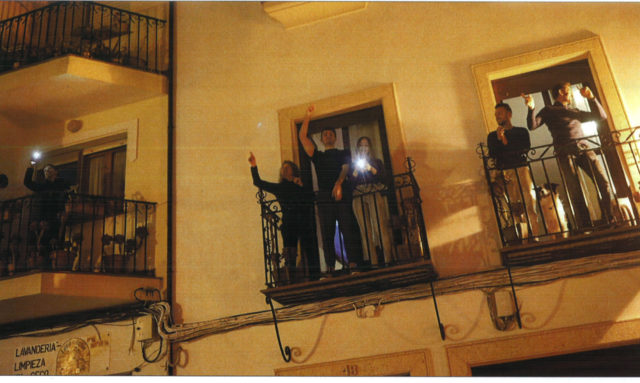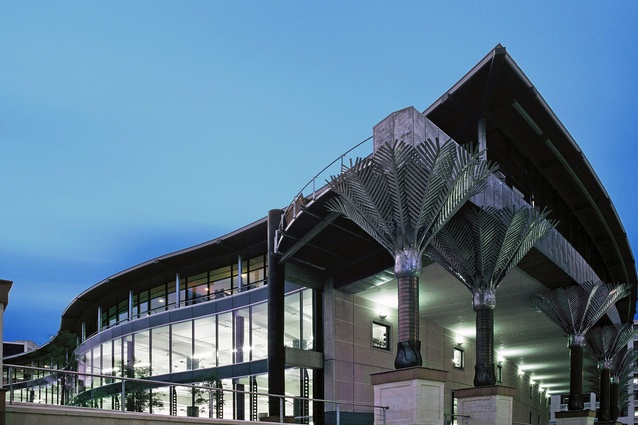ARCHITECTURE POST COVID
Like most , I have been self-isolating which is pleasantly distractionless and leads to thinking not possible in the familiar rat race.
Our collective eradication efforts, together with the development of suitable vaccines ,will eradicate this incredibly contagious little enemy in the not too distant future.
It seems certain that post-Covid social behaviour will be kinder, cleaner ,more people focussed, less selfish and supportive. And more caring about older people. Strange as we feel now, we people of planet earth,are soldiers in a war like no other .
I suspect that in future New Zealanders will be buying local, staying local, and reinforcing the strengths of our immediate neighbourhoods. Hopefully our institutions will we be less beaurocratic. We need to remove useless job activities that make our unemployment figures look good, but are unsustainably non-productive. To re-prioritise our efforts to be more contributory to societies real needs, is a good objective.
Because I am not qualified to discuss changes in social behaviour, I am limiting my thoughts to what may happen to architecture. I would be happy if other architects could express their views.
There has already been some disturbing reactions to long term future architecture.
I read a recent article in a German architectural journal , suggesting that post-Covid apartment buildings should be replaced with individual houses ,with no virus spreadable common areas, stairways and lifts.
In my view this is wrong. To be consistent, paranoia of the ‘danger’ of public space would have to also apply to buses, trains and other forms of public transport. The safe bubble of a private car is preferred . The negative environmental and infrastructural effects of sprawled suburbs serviced only by cars (buses don’t work in low density environments), is well documented.
The sight of people on their apartment balconies in France and Spain singing and waving to each other (at more than 2.0m apart of course) and to the street below, was absolutely heartwarming.
I believe we must re-evaluate our relationship with nature. It should for instance be mandatory for apartments to have outdoor spaces and roof decks, usefully planted. Fruit and vegetables should prioritise over ‘specimen’ trees in any available outdoor space.
I financed my education by mowing lawns. There were lots to mow and it was good to be able to covert the clippings to cash. Whilst private lawns are pretty looking, they are also pretty useless and an excuse for wasting space. Ground cover is green and low maintenance .Bird houses and glass houses should be encouraged. Herb window boxes could be located outside every kitchen window.
There has been, in recent years, a growing lack of the architectural expression of habitation in high density housing. Many new apartment buildings are indistinguishable from office buildings and the provision of balconies would also address this problem.
In terms of construction, we need to prioritise local contractors, suppliers and building materials, and forgo importing building products s and systems unless these are unavailable locally.
We need to prioritise the construction of public buildings for future social health. The plight of the much loved Wellington Public Library, is a case in point. This beautiful building is currently closed while our risk-averse Council looks at the cost of bringing it up to 100% of the earthquake code. They say it may be cheaper to demolish it and rebuild. To get to 100% is uneccessary ,as well as environmentally irresponsible, and we would lose an iconic building. To the list of death or injury from car and boat accidents, illness, electrocution, fire, drowning, and self harm, we can now add pandemics.
Earthquakes are a relatively minor cause of loss of life, and with a pragmatic strengthening to say 2/3rds earthquake code would enable the library to open much sooner, and at much less cost to our financially stretched Council. Sadly it is easier for local bodies to be overzealous about earthquake standards. Much harder to address the many other causes of death and injury. The 80 year period between the 1931 Napier quake and the Christchurch sequence, killed fewer than 500 people. Whilst not making light of this, statistics show that 40,000 people died in road accidents.
The absence of a key public central library is a case of the cure being worse than the problem.
We need to be pragmatic rather than ‘box tickers’.
The RMA and Building consent red tape is adding huge additional costs to housing. I believe Building Consenting should be by a centralised body rather than through the 80 odd Local Authorities that we currently have in our small country (population comparable with Melbourne) .In addition to speeding up consenting, the process would be far more consistent and efficient.
We should prioritise better quality environmental outcomes. People respond to ‘beauty’ through art, music and photography, but no so much with architecture. We should actively discourage ugliness. Our built environment needs to be a beautiful as well as functional. These two values are not mutually exclusive.
The care of our planet is still paramount and post-Covid, we must build in a low energy use, sustainable manner for the successful lives of our future generations. As has been said before this pandemic rose up ’ there is no Planet B’
Despite the appalling suffering and loss of life, Covid has temporarily halted global warming and we should take this opportunity to re balance not only our behaviour but also our built environment .


